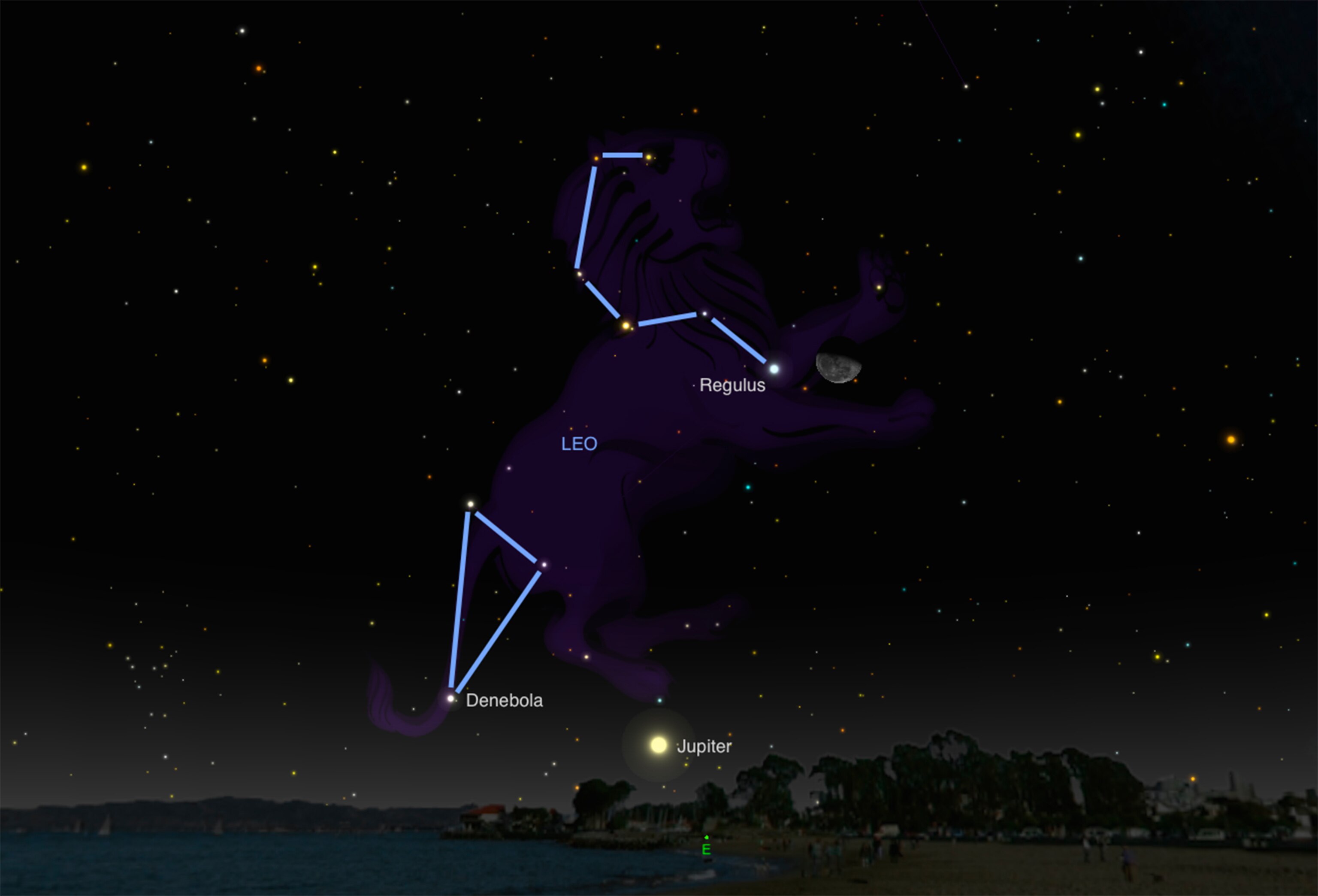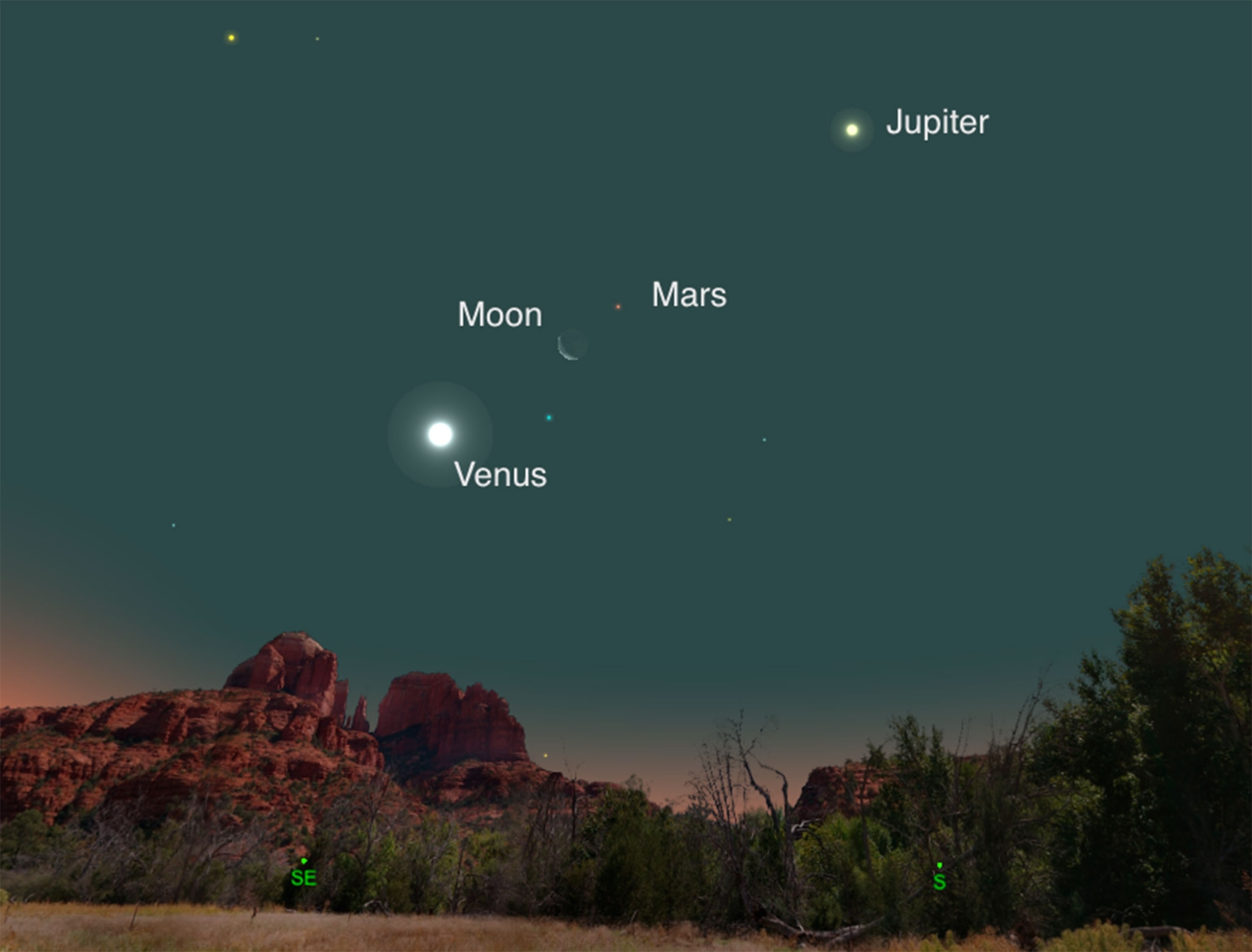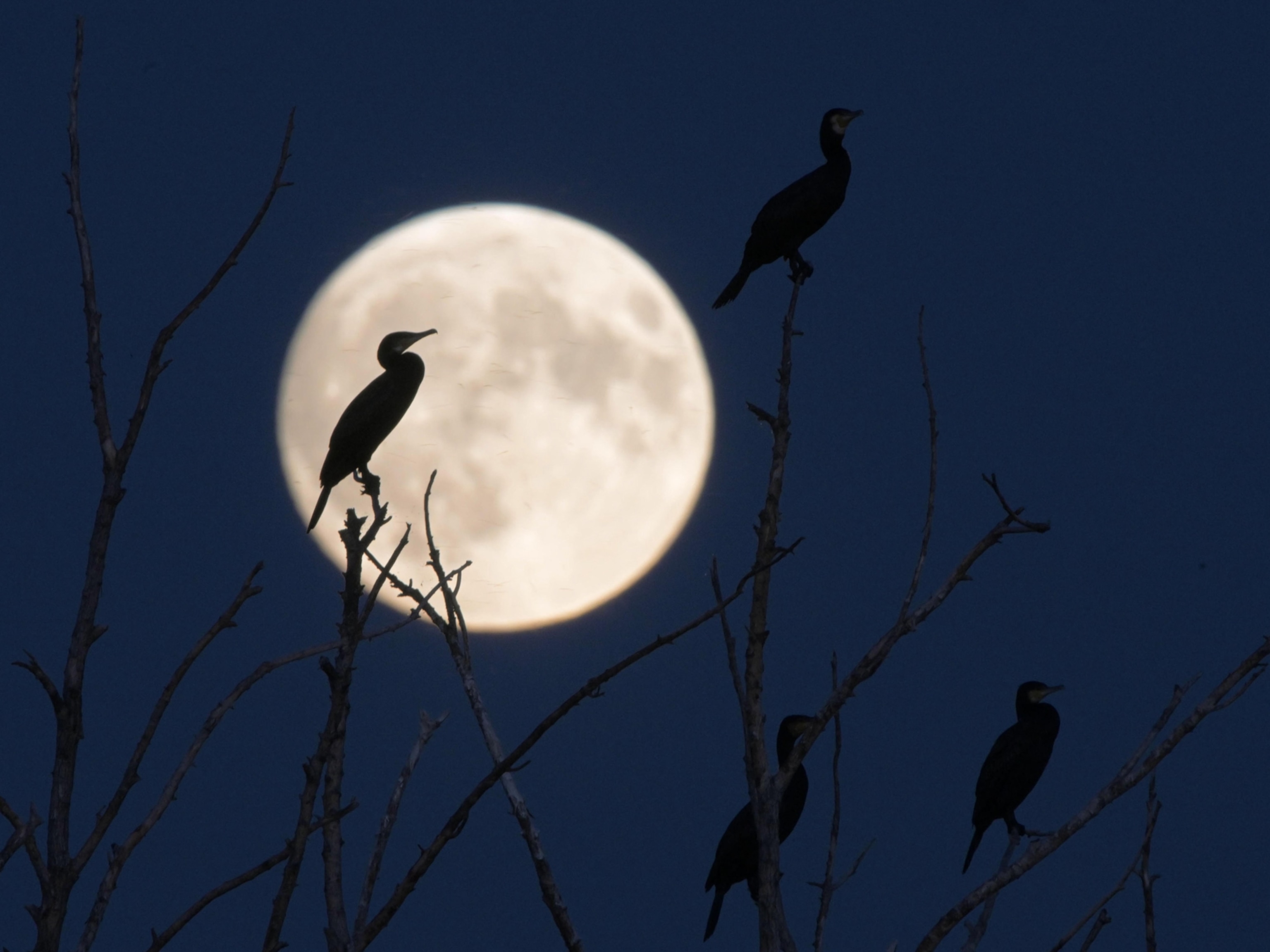
This Week’s Night Sky: Geminid Meteor Shower Starts to Sprinkle
One of the year's premier sky events kicks off, while the moon traces a path through a lion's heart.
Moon and Regulus. Late night Tuesday, December 1, you can use the moon as your guide to find a lion's heart in the sky.
The waning gibbous moon will rise in the east next to the super-bright star Regulus, which marks the heart of Leo, the lion constellation.
The blue-white star will appear only four degrees from the moon—less than the width of your three middle fingers held at arm’s length. Leo is one of the few constellations that appears to resemble its mythological character, and is easy to trace out even from brightly lit suburbs.

Regulus marks the base of a giant sickle, or backwards question mark, traced out by five other moderately bright stars visible to the upper left of the moon as seen from North America.
If you wait until after midnight, the rump of the celestial beast, to the lower left of Regulus, rises above the horizon too. It is marked out by three bright stars in the form of a triangle, with the most prominent, the 35-light-year-distant Denebola, representing the lion’s tail.
Jupiter and Luna. By Friday, December 4, the crescent moon has moved further into the early morning sky and is parked next to the brilliant Jupiter.
The two bright objects will be only 2 degrees apart—about the width of your thumb held at arm’s length. Of course the moon is a mere 1.2 light-seconds from your eye, while the gas giant is so far away that light reflecting off its turbulent atmosphere takes nearly 46 light-minutes to reach Earth.
The celestial pair makes a grand sight for the unaided eye and an amazing photo opportunity, especially with both ruddy Mars and diamond-like Venus hanging just below.

Train even the smallest of telescopes on Jupiter and spy on its amazingly active weather system—complete with cloud bands and oval-shaped cyclonic storms.
Also, don’t forget to check out Leo constellation perched right above the Venus-Jupiter duo.
Geminids Turn On. Starting Saturday, December 5, the annual Geminid meteor shower officially begins.
While only a trickle of meteors will be visible during the overnight hours, the shower will ramp up over the next two weeks and peak on December 14. At that point, the shower will become one of the premier astronomical events of the year.
The shower gets its name from the Gemini constellation, where all the shooting star appear to radiate out from. Stay tuned for more details.

Mars Meets Moon. During early morning twilight on Sunday, December 6th, skywatchers get a real sky show as the Red Planet gets its chance to hang out with the thinning crescent moon.
The dramatic pair will appear only four degrees apart—less than the width of your three middle fingers held at arm’s length.
Clear skies!
Follow Andrew Fazekas, the Night Sky Guy, on Twitter, Facebook, and his website.





